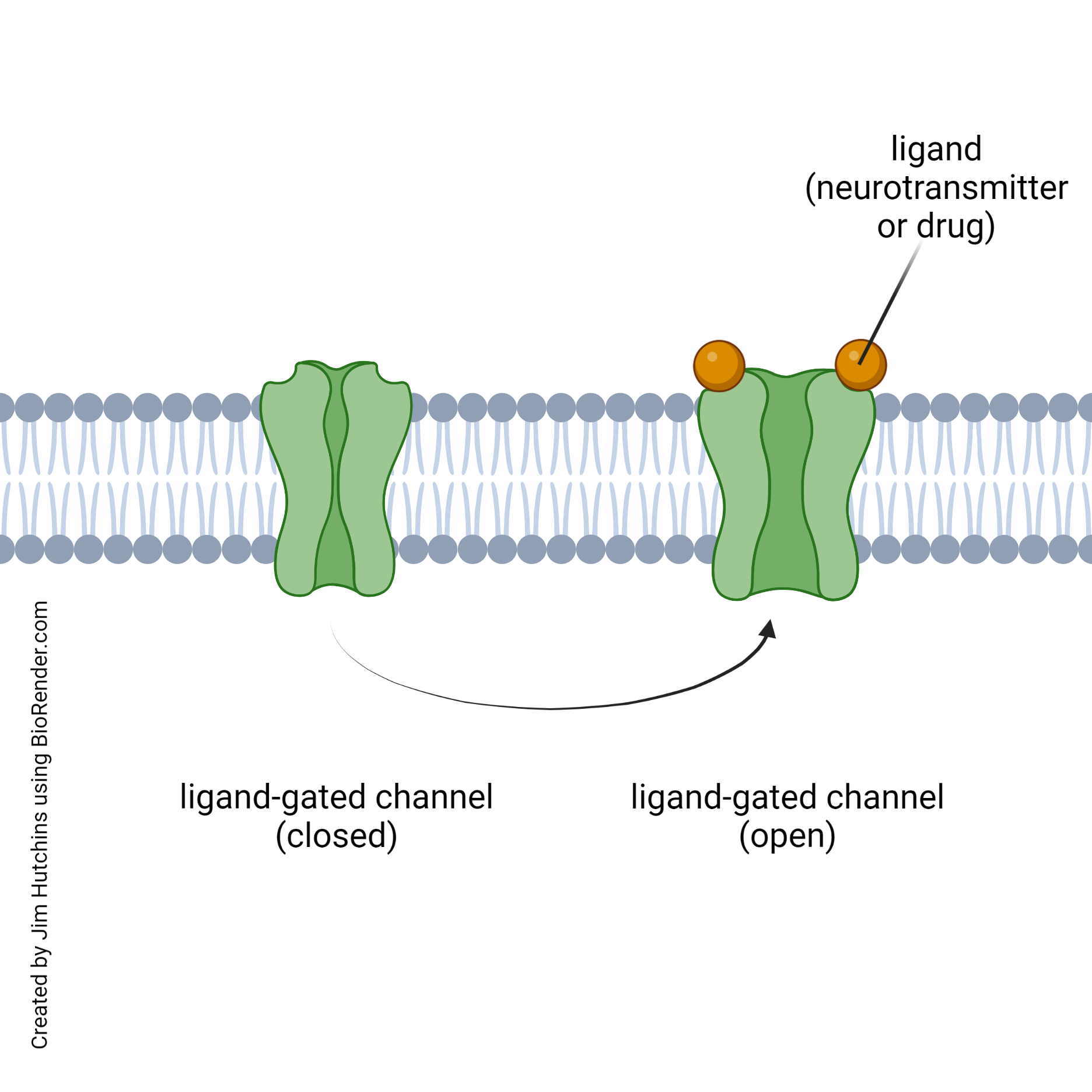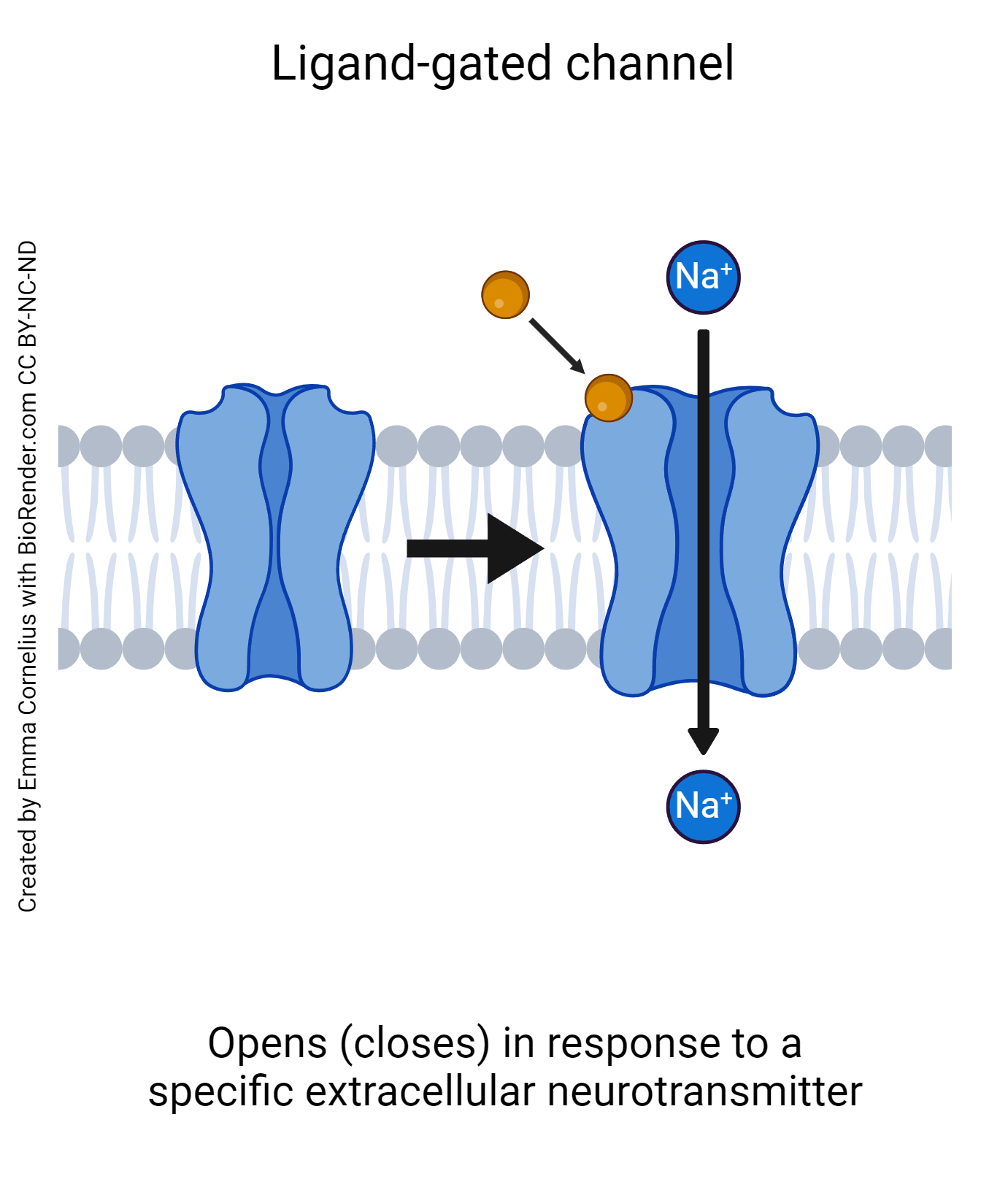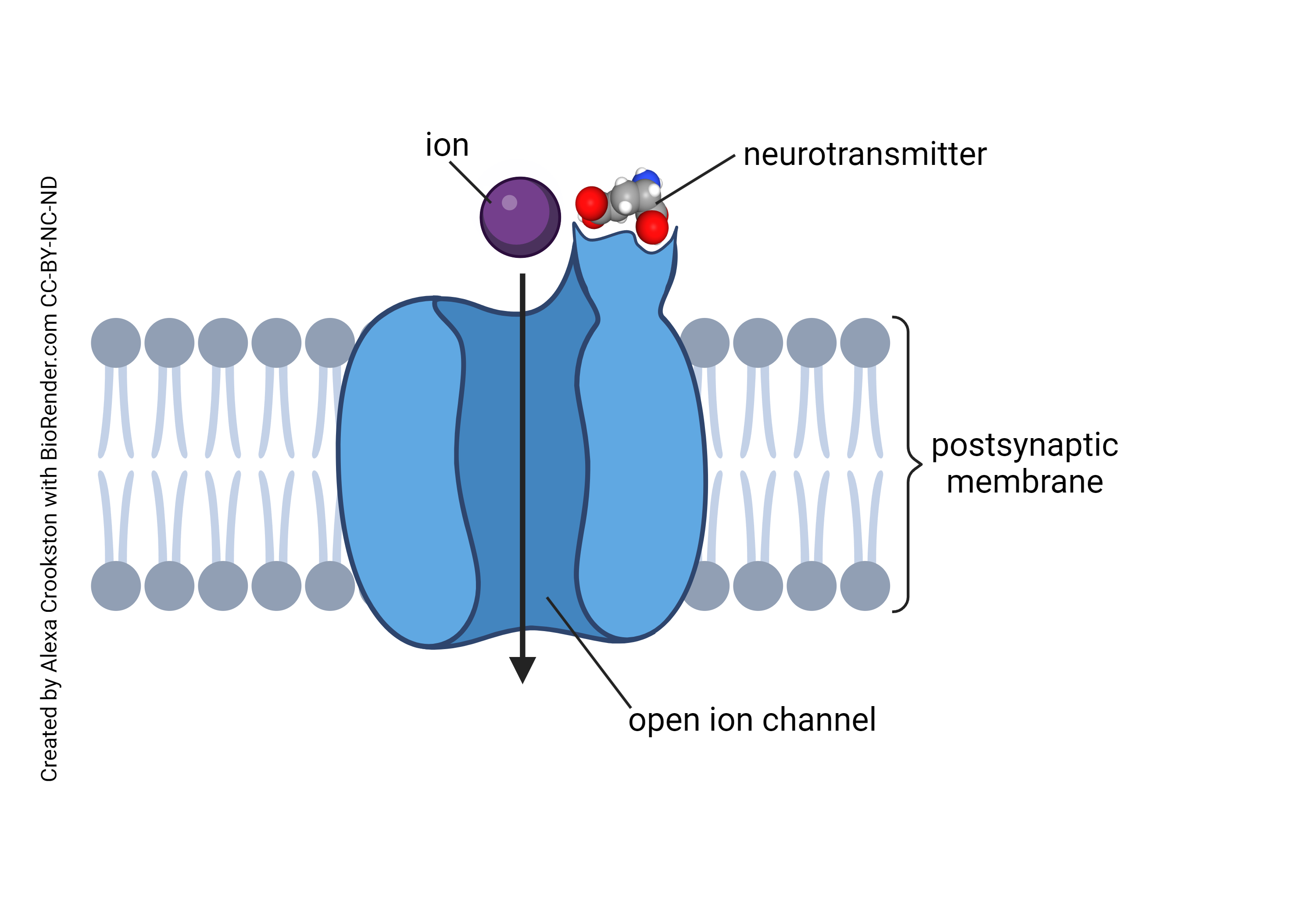Ionotropic Receptors (Ligand-Gated Channels)
Caleb Bevan
Objective 4: Describe the function of a ligand-gated ion channel.


A ligand is a drug or neurotransmitter. A receptor is a protein on the surface of neurons and other target cells that has a pocket where ligands bind. When a ligand binds, the receptor protein changes shape and initiates one of two responses.
There are two categories of neurotransmitter receptors, one for each type of response. Both are similar in that they bind to an extracellular signaling molecule released from a neuron (i.e. they bind to neurotransmitters) and that they change shape when the neurotransmitter is bound.
Where they differ is in what happens when the ligand binds. If a channel is opened, allowing ions to pass, the receptor is called a ligand-gated channel or an ionotropic[1] receptor.
If a ligand-bound receptor changes the intracellular biochemistry of the target (i.e. its metabolism), it is called a metabotropic receptor. Metabotropic receptors will be discussed in the next section.

The term ionotropic derives from ions, which can pass through its channel, combined with the Greek word τρόπος (trópos), “a turn”, describing the shape change which is initiated by receptor binding.
Agonists are drugs which act in the same way as the naturally occurring neurotransmitter. In some cases, agonists bind more strongly to the receptor than even the naturally occurring neurotransmitter.
Antagonists are drugs which partially or completely block the response of the naturally occurring neurotransmitter. In a novel, the antagonist is trying to stop the main character from carrying out an action. It’s the same for receptor antagonists; they get in the way of what the neurotransmitter is trying to do.
Media Attributions
- Generic ligand gated channel function © Jim Hutchins is licensed under a CC BY-NC-ND (Attribution NonCommercial NoDerivatives) license
- Ligand-gated channel © Emma Cornelius is licensed under a CC BY-NC-ND (Attribution NonCommercial NoDerivatives) license
- Ligand-Gated Channel © Alexa Crookston is licensed under a CC BY-NC-ND (Attribution NonCommercial NoDerivatives) license
- This word is pronounced eye-on-oh-troh-pick, even though it shares a Greek root with tropic, as in tropical regions of Earth. ↵

